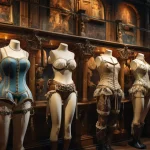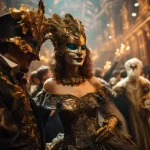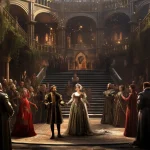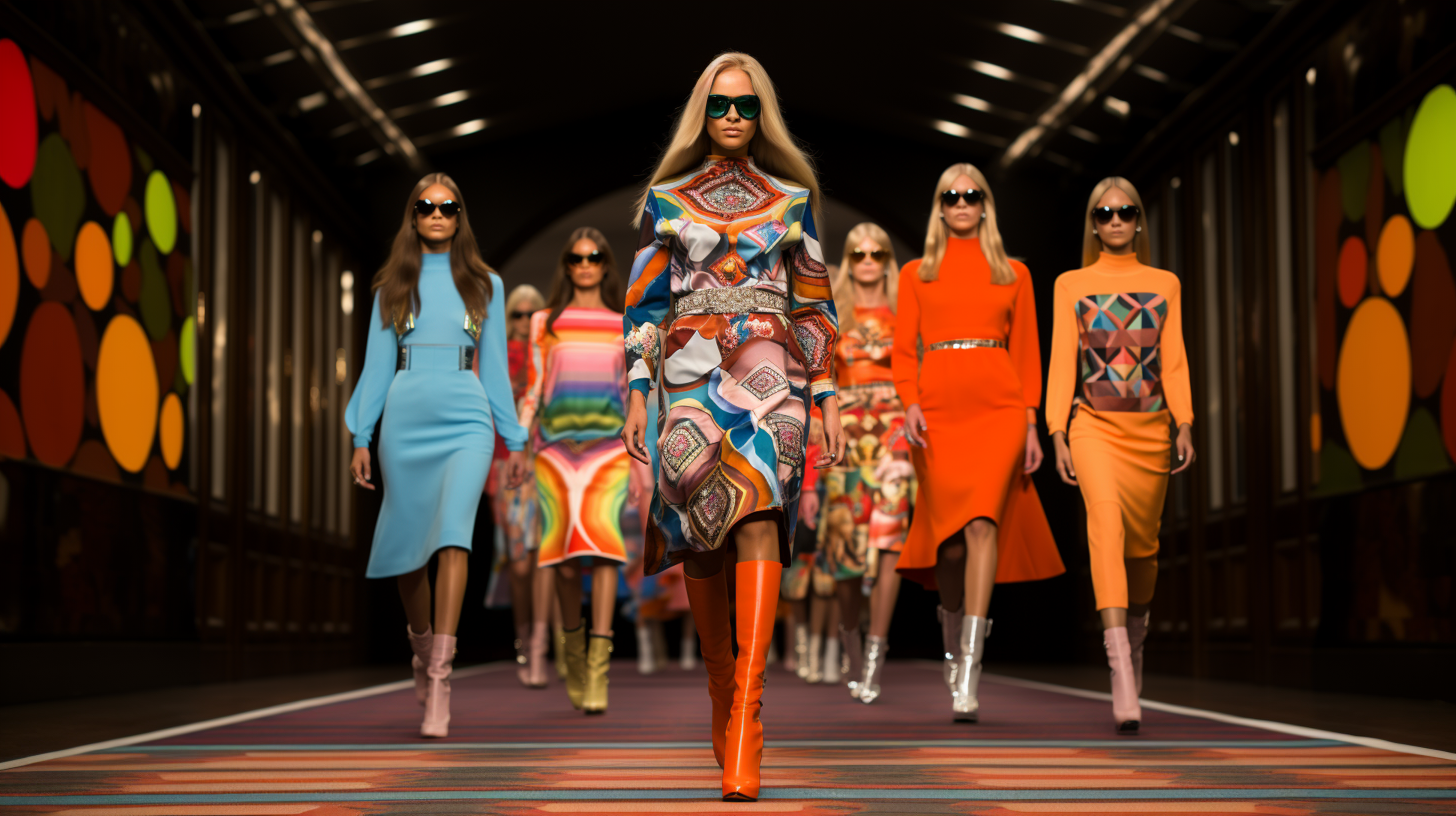
Swinging Sixties Style: Revolution on the Runway
The 1960s: A Decade of Transformation
A riveting era, the 1960s, was an epoch of tremendous cultural and social upheaval. It was a time when the world seemed to be shifting on its axis, and the seismic waves of change rippled through every aspect of society. In this blog post, we will journey back to this captivating period and explore how it shaped the world of fashion.
The Fashion Industry’s Response
As the 1960s dawned, the fashion industry found itself at the crossroads of change. It was a time of rebellion against convention, and this spirit of defiance was palpable on the runways and in the streets. Designers, like pioneers charting new territories, embraced the winds of change, creating styles that mirrored the shifting cultural landscape. They dared to push boundaries and redefine what was considered fashionable.
1960s Runway Fashion
The focus keyword for our exploration is “1960s Runway Fashion.” This keyword encapsulates the essence of this era’s fashion. It’s not just about clothing; it’s about the runway as a stage for innovation and artistic expression. The runway became a canvas for designers to paint their visions of the future of fashion, and the world watched in awe.
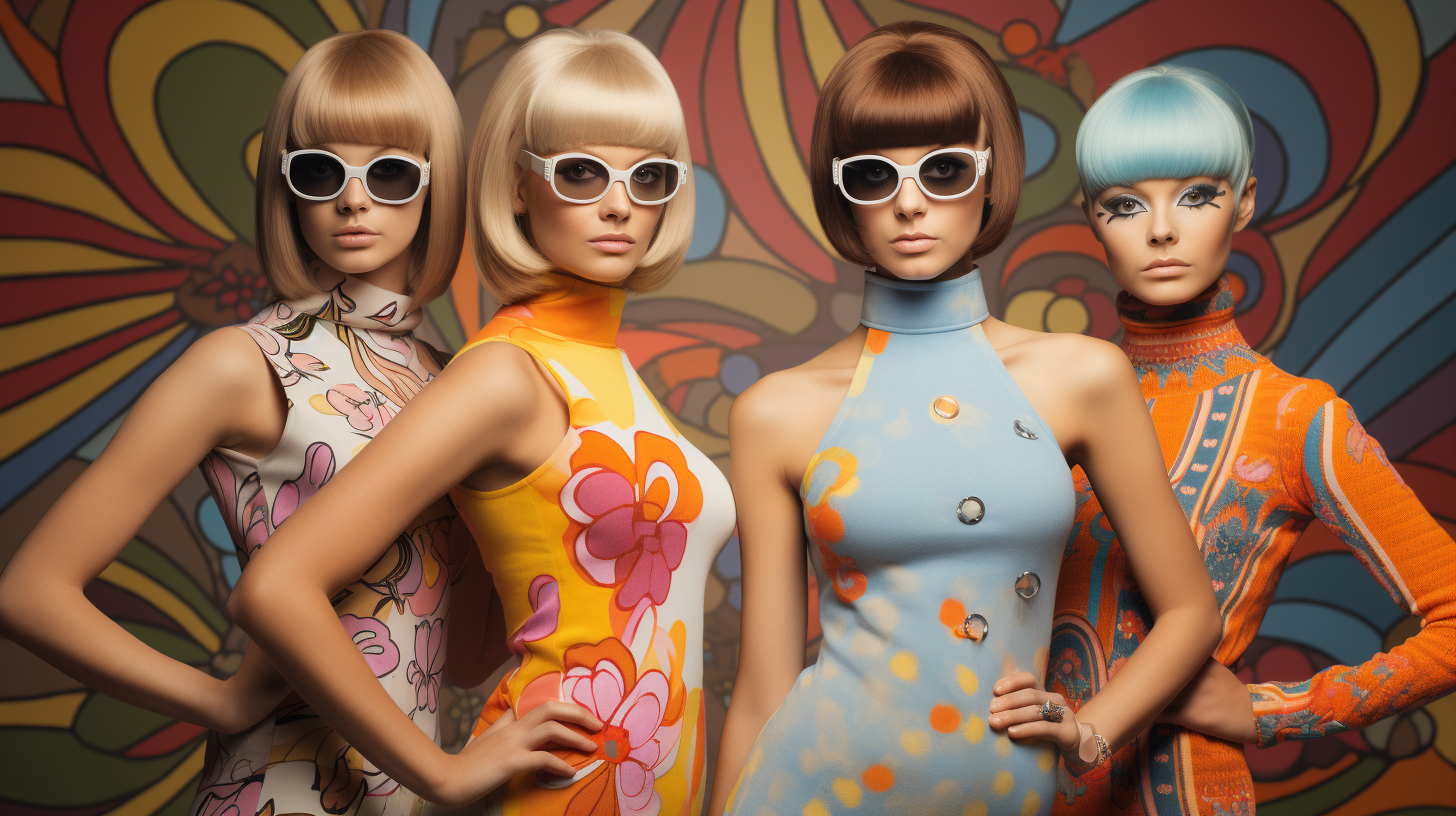
Image : A snapshot of the 1960s, where fashion meets rebellion. Think bold prints, and vibrant colors. It’s a snapshot of an era where fashion took center stage as a reflection of societal change and a catalyst for transformation.
The 1960s: A Decade of Revolution
Ah, the 1960s! A tumultuous time where history was in the making, and society stood on the brink of transformation. It was an era marked by seismic shifts, where the world was on the cusp of a new age. Let’s dive into the waters of this transformative decade and see how its tides swept through the world of fashion.
A Dance of Historical and Social Events
Imagine, if you will, a world where the civil rights movement was gaining momentum, challenging deeply ingrained prejudices. The moon landing, a giant leap for mankind, was a testament to human achievement. Meanwhile, the Vietnam War was a divisive force tearing at the fabric of society. These were the historical events that served as the backdrop for the 1960s.
Cultural Waves Shaping Fashion
As the 1960s unfolded, the winds of change blew through culture like a mighty gale. The youth were rising, challenging the status quo, and questioning the establishment. This cultural revolution ignited a fervor for freedom and self-expression that reverberated in the world of fashion.
Fashion as a Mirror of Change
Fashion, in this tempestuous era, was not merely about clothing. It was a mirror reflecting the values, hopes, and struggles of a generation. It was a language of rebellion, identity, and aspiration. From the runways to the streets, fashion became the canvas on which individuals painted their beliefs and desires.
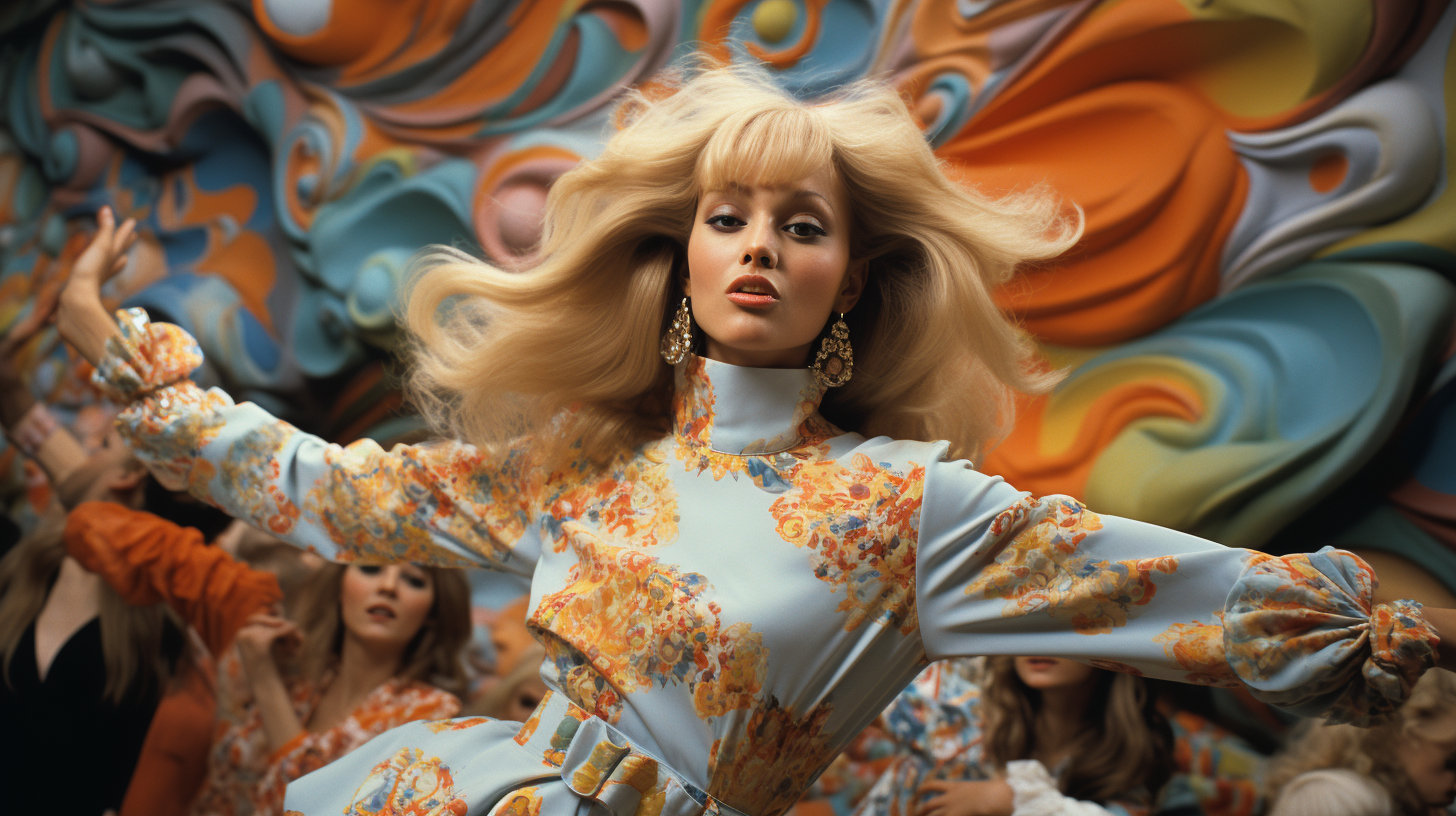
Image Description: Picture a swirling vortex of change, where historical events and cultural shifts collide.
It’s a chaotic dance of social upheaval and artistic expression, captured in the fabric of clothing and the spirit
of the times. This image encapsulates the 1960s as a tumultuous yet transformative period in history, with fashion at its epicenter.
Pioneers of Style: Shaping the 1960s
In the swirling whirlwind of the 1960s, a handful of visionary designers emerged as trailblazers, crafting the very essence of this transformative decade. These designers didn’t just create fashion; they sculpted a cultural revolution. Let’s journey into the world of these influential architects of style.
Mary Quant: The Trailblazing Visionary
Ah, Mary Quant! The mere mention of her name conjures images of rebellion and liberation. She was the architect behind one of the most iconic fashion pieces of the 1960s—the miniskirt. Mary Quant’s impact on the fashion industry was seismic, as she shattered the norms of hemlines and liberated women from the constraints of long skirts.
The Miniskirt: A Cultural Phenomenon
The miniskirt, a daring creation, was more than just a piece of clothing; it was a symbol of a revolution. Its hemline soared to new heights, challenging the traditional modesty of the past. With a bold and youthful spirit, it captured the essence of the swinging sixties, making it a cornerstone of the era’s fashion.
The Beatles: Shaping Gender-Bending Fashion
Now, if we shift our gaze to The Beatles, we discover that their impact extended far beyond music. These four lads from Liverpool had a profound influence on androgynous fashion. Their style was as unconventional as their music, and they blurred the lines between masculine and feminine attire.
Iconic and Androgynous
The Beatles’ iconic suits, characterized by slim silhouettes and clean lines, defied gender norms. They brought a sense of androgyny to the forefront, encouraging a new approach to fashion where self-expression knew no boundaries.
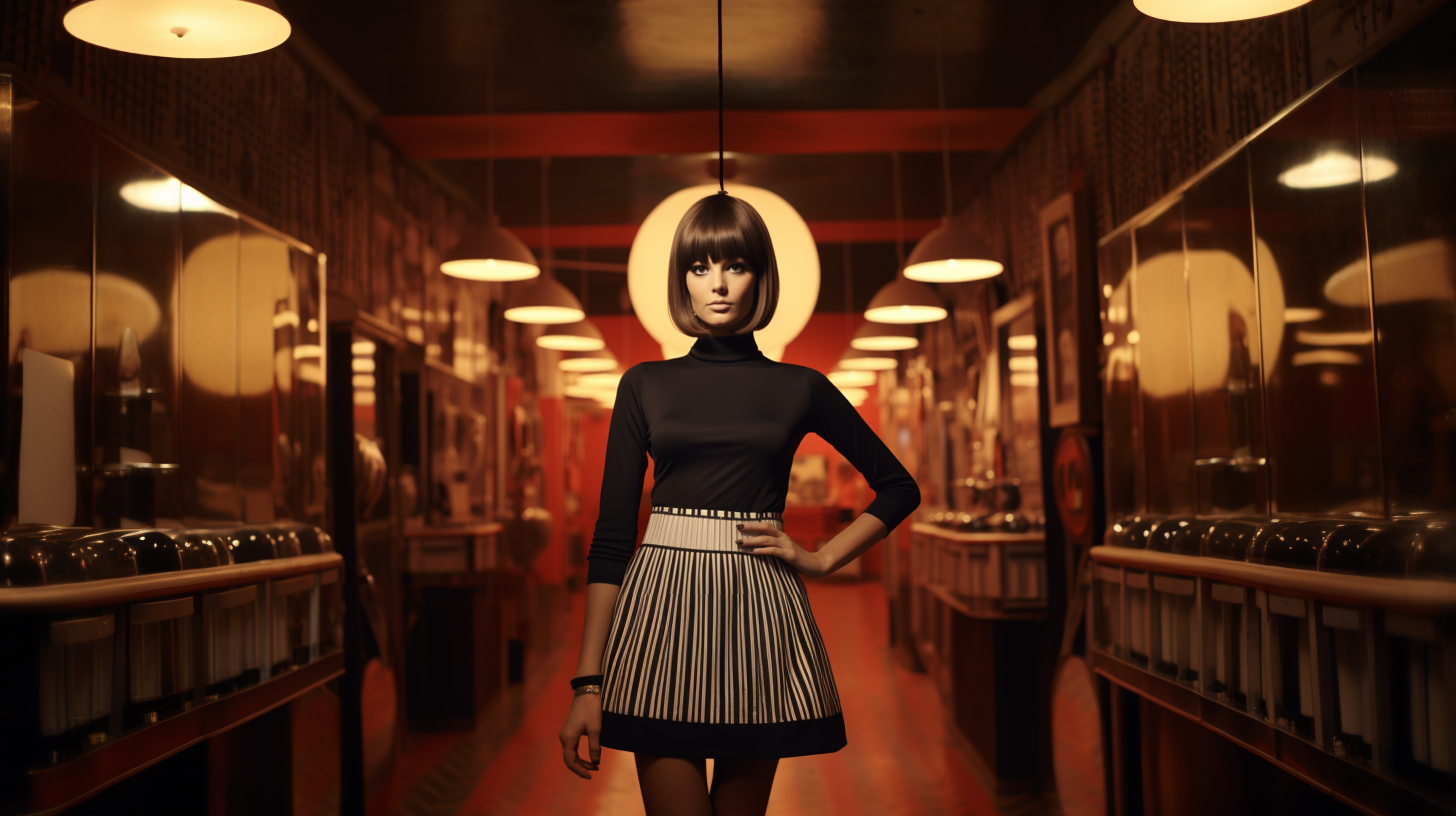
Image Description: Picture Mary Quant miniskirt. This image captures the essence of these influential designers, each a star in the fashion firmament, shaping the course of the 1960s.
The Mini Revolution: Hemlines Ascend
As we continue our voyage through the 1960s, we stumble upon a fashion phenomenon that was as groundbreaking as it was controversial—the rise of the miniskirt. This era saw a sartorial rebellion against the established norms of hemlines, giving birth to a fashion revolution.
The Miniskirt’s Origin and Evolution
The miniskirt, like a comet streaking through the fashion cosmos, arrived suddenly but left a lasting impact. Its origins can be traced to the creative minds of designers like Mary Quant, who sought to challenge the status quo. With daringly short hemlines, the miniskirt shattered conventions that had held sway for generations.
Controversy and Popularity: A Dance of Extremes
The arrival of the miniskirt was met with both exhilaration and outrage. It was a symbol of liberation for many, a declaration of independence from restrictive clothing. However, it also stirred controversy and pushed the boundaries of acceptability. The fashion world and society at large found themselves engaged in a spirited debate over hemlines.
Twiggy: The Icon of the Miniskirt Era
In this exhilarating fashion landscape, a new star emerged, embodying the spirit of the miniskirt era—Twiggy. Her meteoric rise to fame marked a pivotal moment in fashion history. Twiggy was not just a model; she was a symbol of youthful rebellion, representing a generation that was unapologetically embracing change.
Influence Beyond Imagination
Twiggy’s iconic pixie haircut, oversized eyes, and slender frame became synonymous with the miniskirt trend. Her influence was unparalleled, as she graced the covers of magazines, appeared in films, and became an international sensation. Twiggy’s image was a testament to the power of fashion in shaping not only aesthetics but also the collective consciousness of an era.
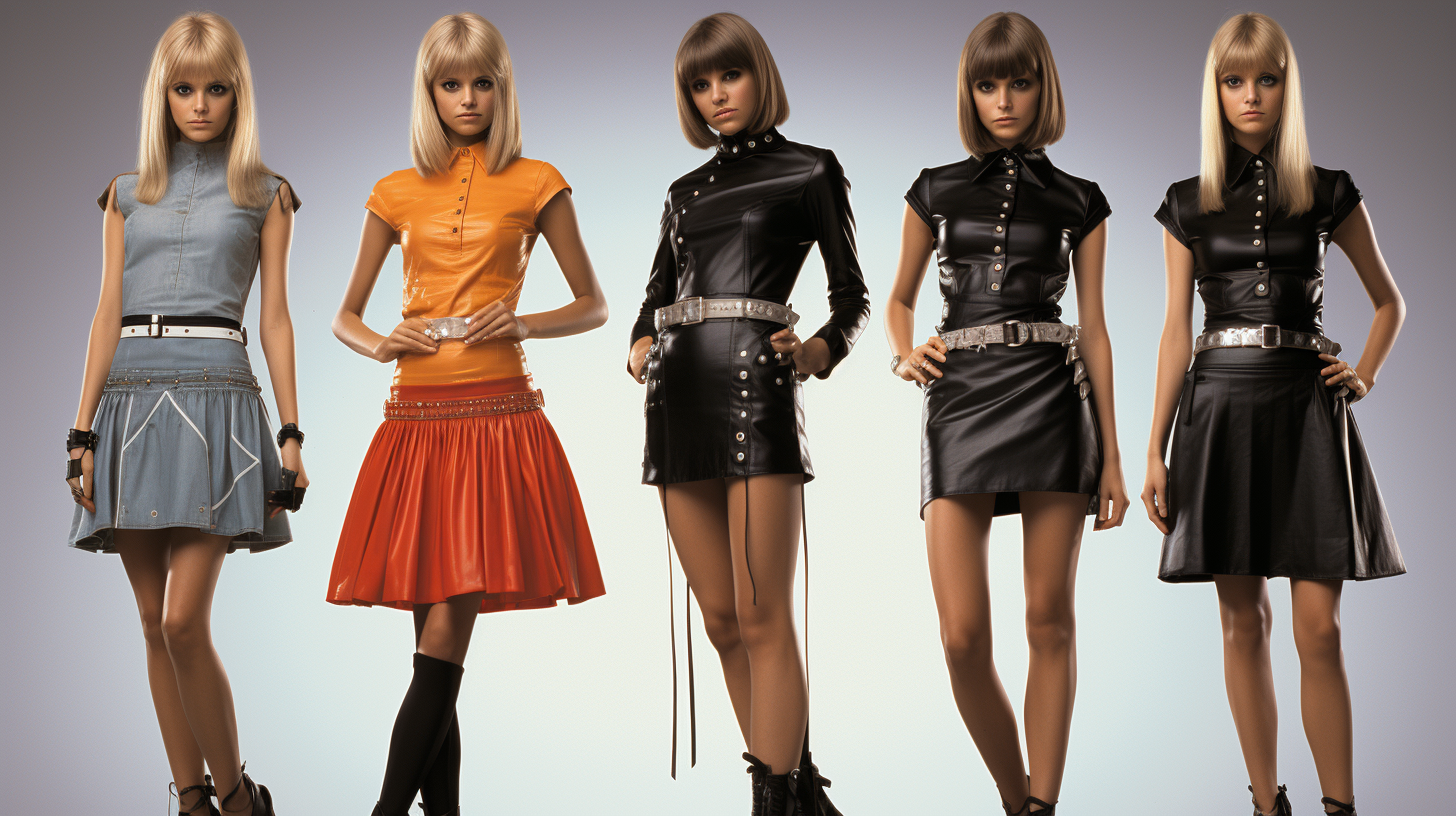
Image Description: Visualize the miniskirt. This image captures the essence
of the miniskirt revolution, where fashion was not just a choice of attire but a statement of liberation and defiance.
Psychedelic Patterns and Colors: A Kaleidoscope of Expression
Our journey through the 1960s ventures into a realm where fashion was transformed into a vivid canvas of self-expression. Psychedelic patterns and a vibrant color palette emerged as the artistic signatures of this era, reflecting the counterculture movement’s kaleidoscopic spirit.
Exploring Psychedelic Prints
In the 1960s, clothing transformed into wearable art as psychedelic prints burst onto the scene. These mesmerizing patterns, characterized by swirling colors and intricate designs, were more than just fabric; they were visual representations of the counterculture’s desire to break free from convention.
A Reflection of Counterculture
The emergence of psychedelic prints was deeply intertwined with the counterculture movement. As young people sought to challenge the established norms, they turned to clothing as a means of expressing their rejection of the status quo. These vibrant, mind-bending patterns became the emblematic attire of a generation seeking new perspectives and experiences.
Bold and Vibrant Color Palette
In this vibrant era, color became a powerful tool of expression. The 1960s witnessed an explosion of bold and vivacious hues that permeated not only clothing but also the cultural landscape. These colors were more than just shades; they were symbols of the era’s optimism and rebellion.
Color as a Language
The color palette of the 1960s spoke volumes about the collective mood of the time. Bright oranges, psychedelic purples, and electric blues painted a vivid picture of an era unafraid to challenge conventions and embrace change. These colors were an invitation to see the world in a different light, to break free from the grayscale of the past.
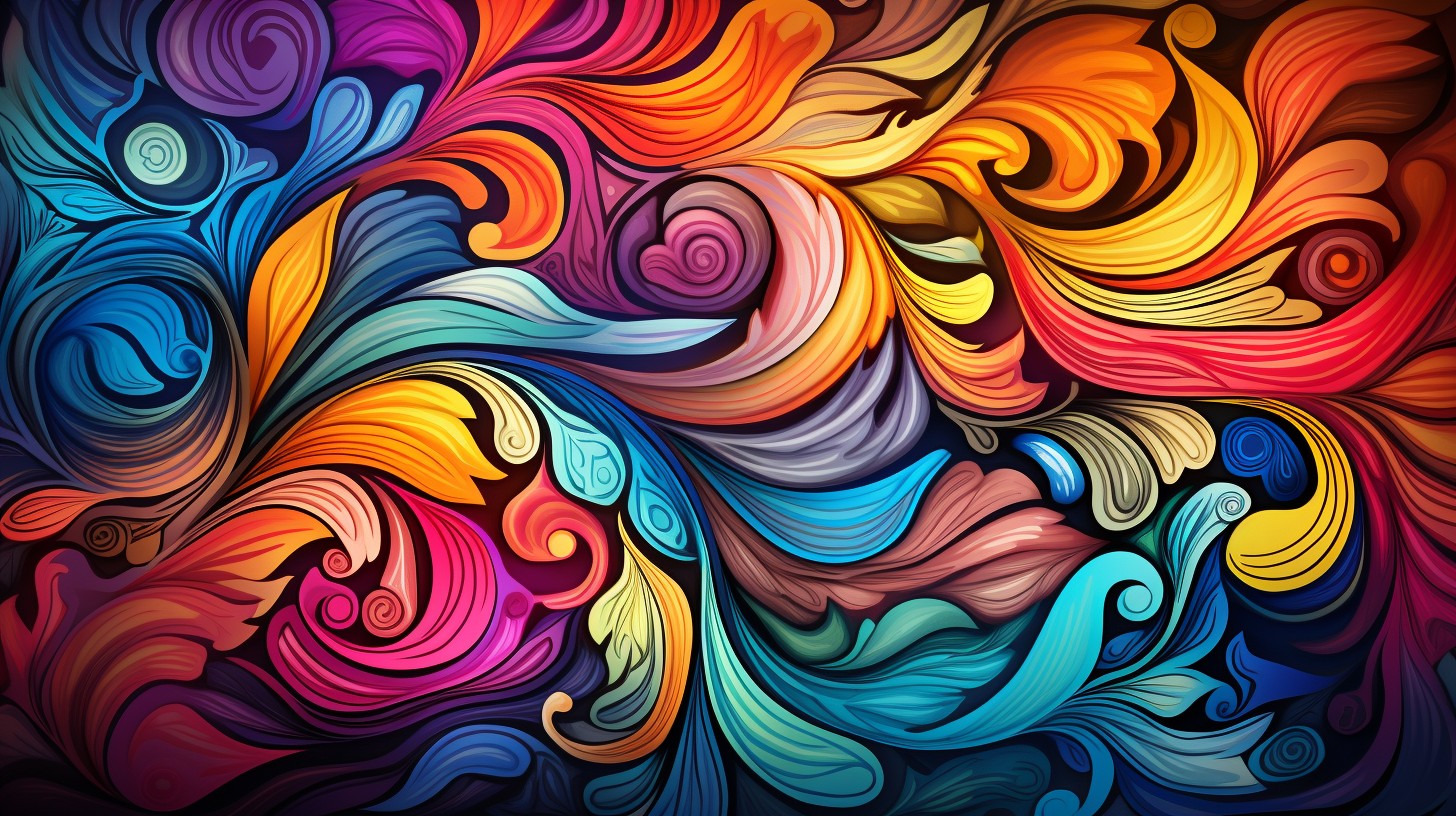
Image a whirlwind of psychedelic patterns and a riot of vibrant colors swirling together in a mesmerizing dance. It’s as if the very fabric of reality has been transformed into a canvas of vivid expression. This image encapsulates the 1960s as a time when fashion became a visual feast of colors and patterns, reflecting the counterculture’s desire for a more colorful and unconventional world.
Iconic Accessories: Defining the 1960s Look
As we continue our exploration of the 1960s, it’s time to shine a spotlight on the accessories that became the hallmark of this transformative decade. From go-go boots to statement jewelry, oversized sunglasses to headbands, these iconic accessories played a pivotal role in shaping the fashion aesthetic of the era.
Go-Go Boots and Statement Jewelry
Picture this, if you will: Go-go boots, with their sleek and mod design, were the footwear of choice for those looking to make a statement. Paired with bold statement jewelry, these accessories became the exclamation marks of 1960s fashion.
Defining the Aesthetic
Go-go boots and statement jewelry weren’t just accessories; they were defining elements of the 1960s fashion aesthetic. The boots, with their bold colors and thigh-high designs, exuded an air of confidence and liberation. Statement jewelry, on the other hand, allowed individuals to express themselves with oversized, eye-catching pieces.
Oversized Sunglasses and Headbands
Now, let’s shift our gaze to oversized sunglasses and headbands. Oversized sunglasses weren’t just a fashion statement; they were a shield against the bright lights of a changing world. These shades added an air of mystique and sophistication to any outfit. Headbands, on the other hand, became a symbol of the free-spirited, bohemian ethos of the era.
Icons of an Era
Both oversized sunglasses and headbands became iconic accessories of the 1960s. Oversized sunglasses were the embodiment of Hollywood glamour, while headbands captured the essence of a generation seeking peace, love, and freedom.
Image Description: Imagine a collage of iconic accessories from the 1960s, with go-go boots strutting boldly beside oversized sunglasses, and statement jewelry shimmering with personality. Headbands, adorned with flowers and beads, complete the picture. This image encapsulates the 1960s as an era where fashion was not just about clothing but also the accessories that defined an entire generation.
The Enduring Legacy: 1960s Runway Fashion
The runway fashion of the 1960s was more than just a trend; it was a cultural phenomenon that left an indelible mark on the world of style. As we continue our voyage through this transformative decade, we mustn’t overlook the profound and lasting influence it has had on contemporary fashion.
A Timeless Influence on Modern Style
Picture this, if you will: The fashion of the 1960s still resonates in the runways and streets of today. Its influence can be seen in the designs of modern fashion houses and the wardrobes of fashion-forward individuals. This era’s bold experimentation with color, pattern, and silhouette continues to inspire and captivate.
Modern Designers Paying Homage
Modern designers, like skilled interpreters of a classic symphony, draw inspiration from the 1960s. They reinterpret its aesthetic, infusing it with a contemporary twist. Names like Marc Jacobs and Anna Sui have paid homage to the era’s vibrancy, giving it new life and relevance.
The Enduring Appeal
The runway fashion of the 1960s possesses an enduring appeal that transcends time. It’s a testament to the era’s ability to capture the essence of a generation. The miniskirt, psychedelic patterns, and bold color palettes remain symbols of a rebellious spirit that continues to inspire those who seek to break free from convention.
Image Description: Visualize a seamless blend of 1960s fashion and contemporary style, where vintage meets the modern. It’s a harmonious collision of eras, with models walking the runway in miniskirts, adorned with psychedelic patterns and vibrant colors, while modern elements intertwine seamlessly. This image encapsulates the enduring legacy of 1960s runway fashion, where past and present converge in a timeless celebration of style.
Cultural Impact and Reflection: A Dance of Society and Style
As we delve deeper into the fashion of the 1960s, we uncover an intricate dance between cultural transformation and the clothing choices of the era. Fashion became a mirror reflecting the sweeping social and cultural shifts, challenging norms, and even becoming a powerful tool for protest.
Fashion as a Mirror of Social Change
Imagine, if you will, fashion as a mirror reflecting the zeitgeist of the 1960s. It captured the turbulence and the aspirations of a generation seeking change. Hemlines rose, and so did voices. Fashion became a platform for challenging the status quo, especially concerning gender norms.
Challenging Traditional Gender Norms
In this era of revolution, fashion played a pivotal role in challenging traditional gender norms. Women embraced androgynous styles, donning pantsuits and rejecting conventional femininity. It was a declaration that women could be strong, independent, and assertive, defying stereotypes and carving out new identities.
Political Statements Through Clothing
The 1960s was a time of activism and political fervor, and clothing became a powerful means of protest. Activists and ordinary individuals alike used fashion to make political statements. From peace signs on t-shirts to slogans on jackets, clothing became a canvas for expressing dissent and advocating for change.
Fashion as a Form of Protest
Picture individuals marching in the streets, wearing clothing adorned with symbols of peace and slogans against war. Fashion became a form of protest, a visual and symbolic language for demanding social and political change. It was a reminder that every stitch and every accessory carried a message.
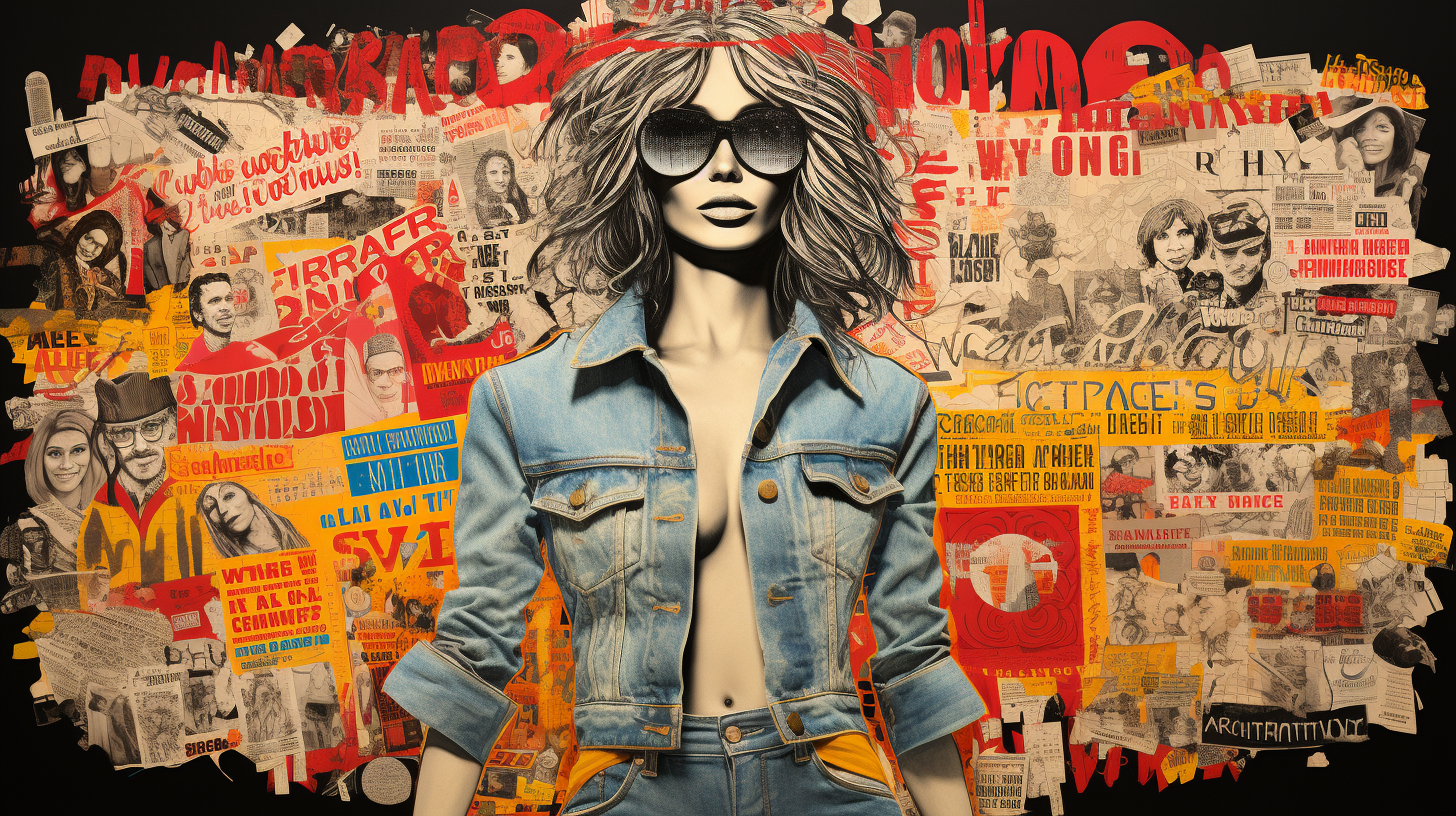
Image Description: Visualize a tapestry of fashion and social activism, where clothing becomes a canvas for change.
Imagine slogans, peace signs, and symbols of protest seamlessly woven into garments, as if fashion itself became a
manifesto. This image encapsulates the 1960s as a time when clothing wasn’t just a statement of style but a declaration
of principles and a catalyst for societal transformation.
The Intersection of Music and Fashion: A Harmonious Fusion
As we approach the culmination of our journey through the 1960s, we must acknowledge the profound influence of music on the fashion of the era. It was a time when music and fashion fused in a harmonious symphony, creating iconic moments that continue to resonate.
Rock ‘n’ Roll and Fashion Fusion
Imagine, if you will, the raw energy of rock ‘n’ roll music electrifying the fashion scene. Rock ‘n’ roll was more than just a genre; it was a lifestyle. Icons like Elvis Presley and The Rolling Stones not only revolutionized music but also left an indelible mark on fashion.
Music Icons and Their Style
These musical pioneers were not just performers; they were style trailblazers. Their leather jackets, pompadours, and rebellious attitude became fashion statements. They embodied the spirit of rebellion, and their style was an anthem for a generation.
Music Festivals and Bohemian Fashion
Now, let’s shift our focus to the phenomenon of music festivals, where fashion took on a new form. Woodstock, a symbol of the counterculture movement, became a breeding ground for bohemian and hippie fashion. It was a celebration of freedom, love, and self-expression.
Woodstock: A Fashion Revolution
Woodstock wasn’t just a music festival; it was a fashion revolution. Bell-bottoms, fringe vests, flower crowns, and tie-dye became the unofficial uniform of the festival-goers. It was a rejection of mainstream fashion in favor of a more natural, free-spirited look.
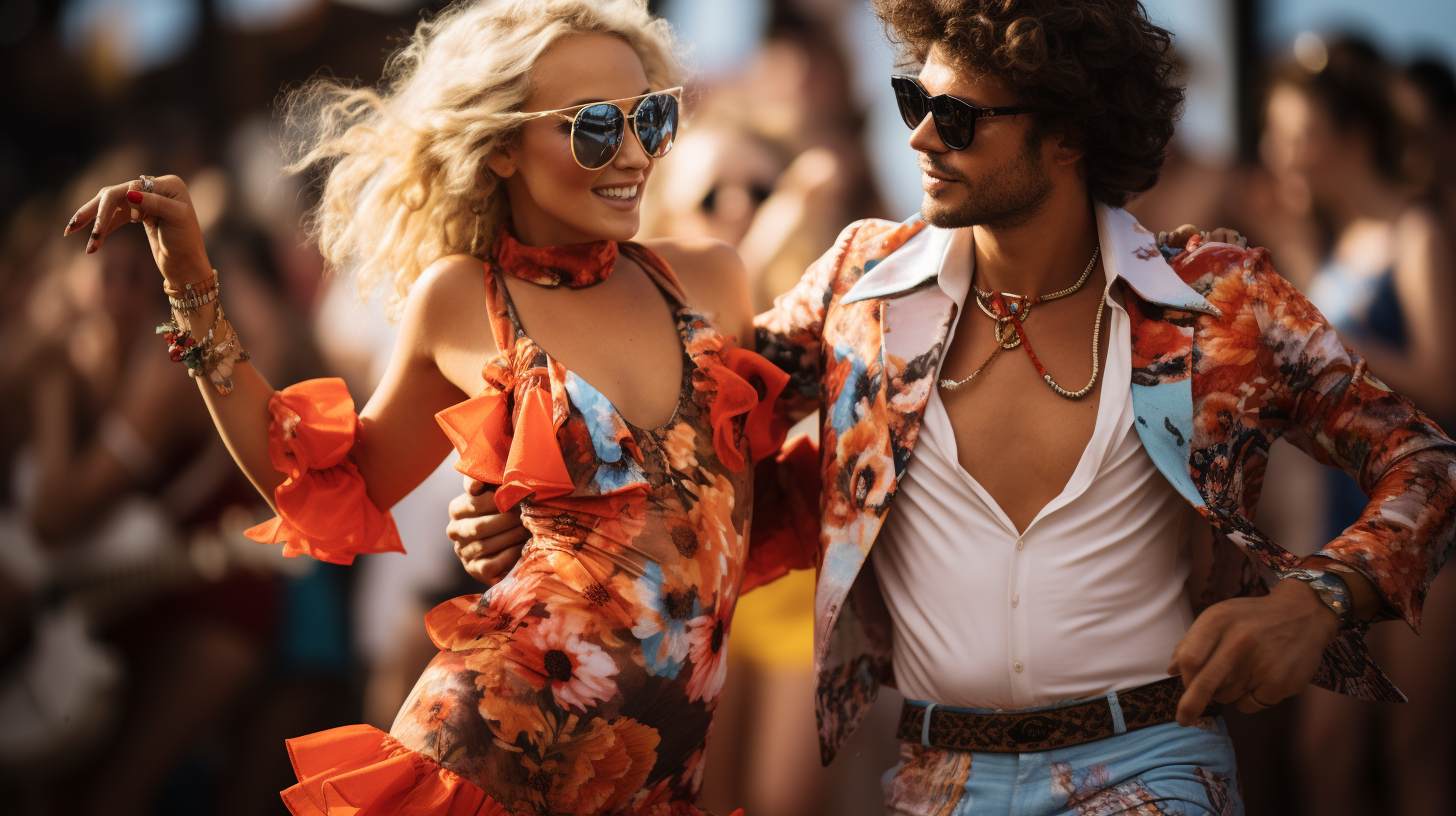
Image Description: Envision the fusion of music and fashion as a dynamic, swirling dance of notes and fabrics. Musical legends like Elvis and The Rolling Stones stand shoulder to shoulder with festival-goers in bell-bottoms and flower crowns. It’s a cacophony of style that echoes through time, where music and fashion became inseparable partners in creating an unforgettable era.
A Final Encore: Celebrating the 1960s Runway Fashion
As our journey through the captivating world of 1960s runway fashion comes to a close, let’s take a moment to reflect on the key points we’ve uncovered. This era was more than just a period of style; it was a revolution in clothing and a reflection of societal change.
Summarizing the Tapestry of the 1960s
The 1960s were a time of immense transformation, both culturally and sartorially. We explored the revolutionary fashion trends, the influence of iconic designers, the emergence of miniskirts and psychedelic patterns, and the profound impact of fashion as a mirror of societal shifts.
The Lasting Influence
The runway fashion of the 1960s has left an enduring legacy that continues to inspire designers and fashion enthusiasts alike. From the daring miniskirt to the bold color palettes, from the counterculture’s rebellion to the fusion of music and fashion, this era’s influence transcends time.
A Call to Explore Further
As we bid adieu to this era, I encourage you, dear readers, to embark on your own journey into the rich tapestry of 1960s fashion history. Dive deeper into the world of miniskirts, psychedelic patterns, and rock ‘n’ roll style. Discover the rebellious spirit that defined an era and still resonates today.
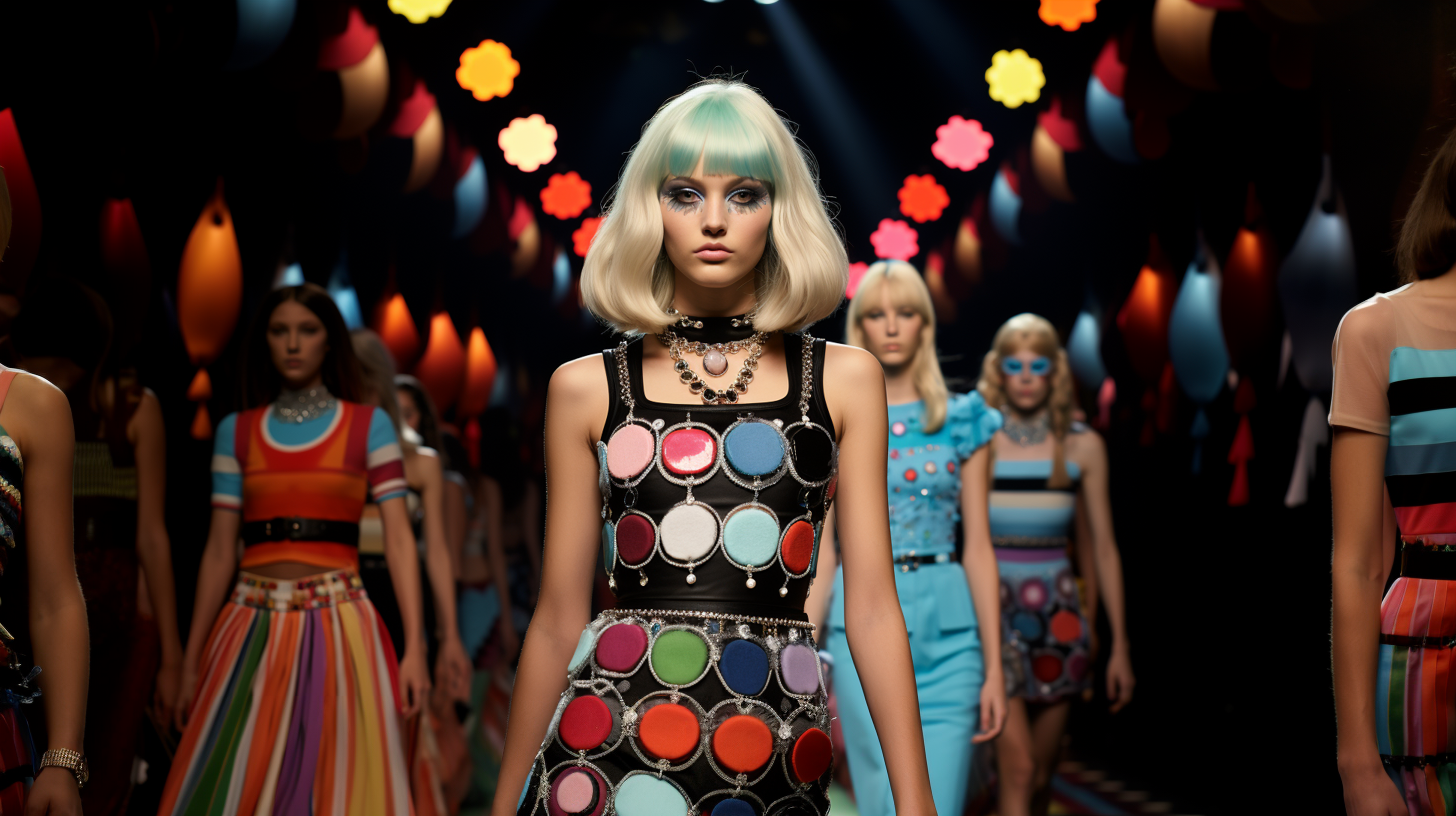
Image Description: Imagine a curtain closing on a stage adorned with the symbols of
1960s runway fashion—the miniskirt, psychedelic patterns, iconic accessories, and the
stars of rock ‘n’ roll. It’s a moment frozen in time, a tableau of an era that continues to inspire
and captivate. This image encapsulates the 1960s as a timeless performance in the grand theater
of fashion history, leaving an indelible mark on the runway of time.



